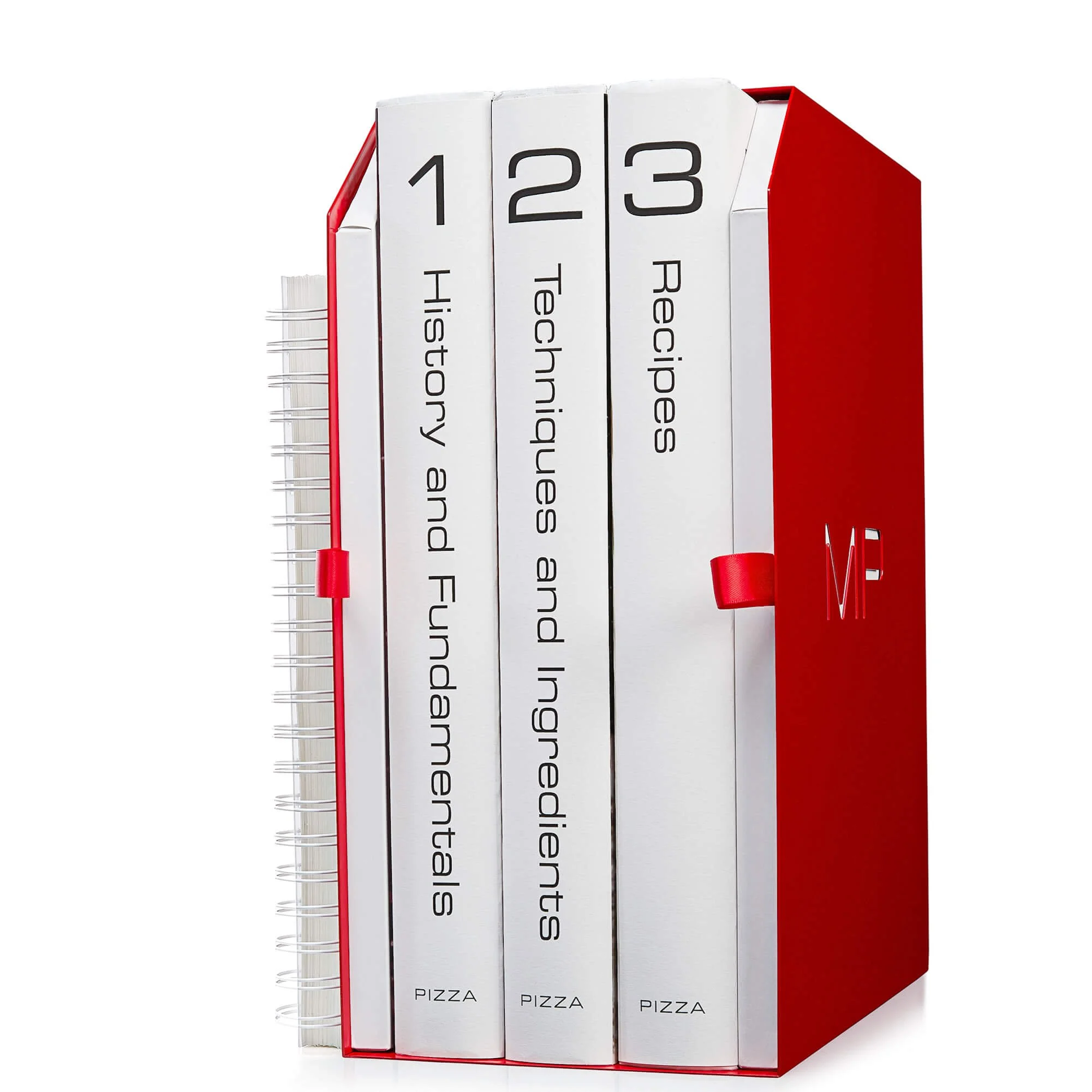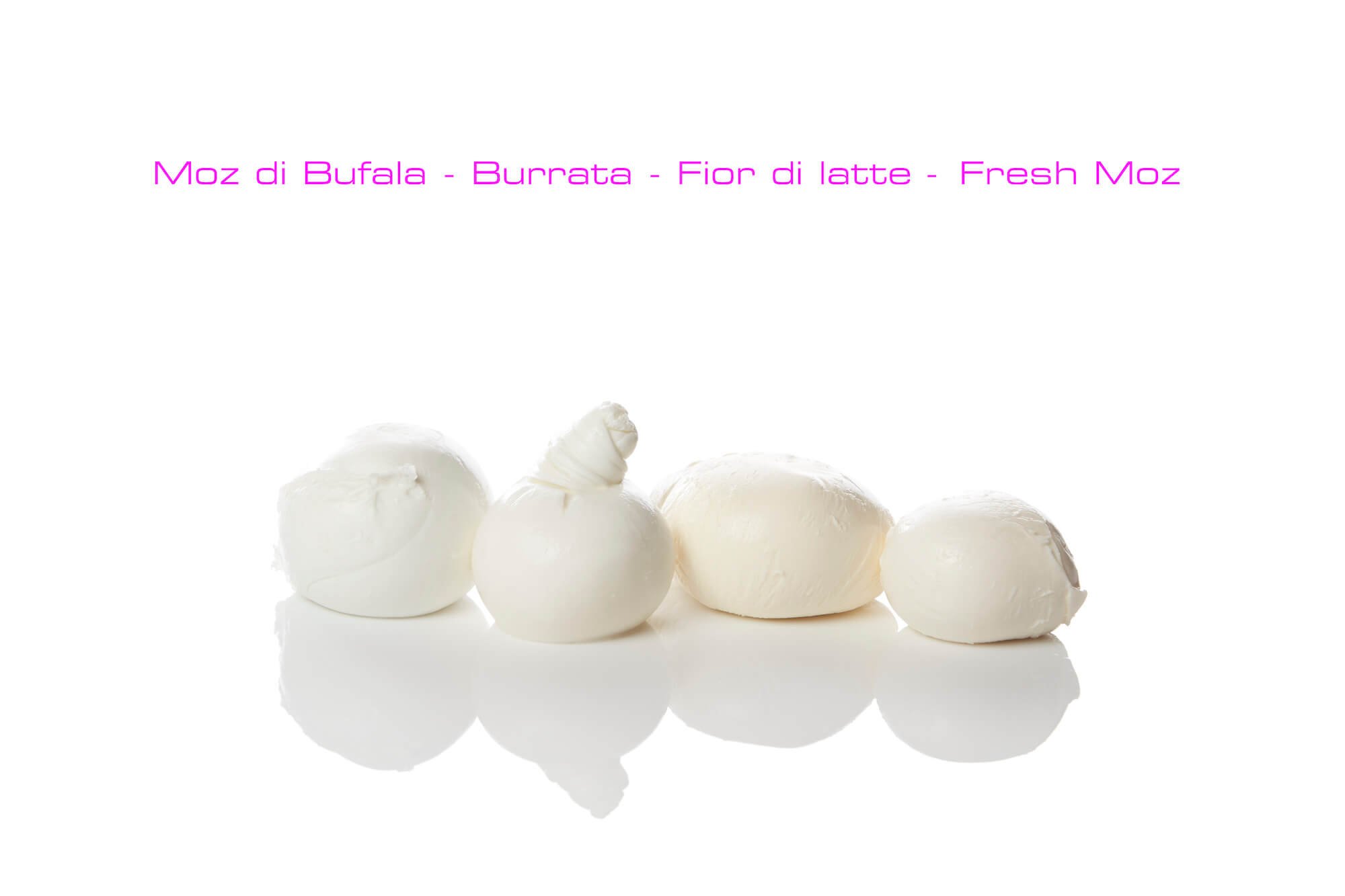Francisco Migoya Reveals the Techniques to Cheesy Pizza Perfection
Modernist_Pizza Photo credit The Cooking Lab, LLC.
There have been many books on pizza, but the latest and possibly greatest is Modernist Pizza. It’s a 3 volume set covering the history and fundamentals, techniques and ingredients, and finally, recipes. The $425 set of books with over 1700 pages goes incredibly deep and that includes a closer look at cheese than ever before.
Francisco Migoya Photo credit The Cooking Lab, LLC.
Mozzarella is the classic cheese used in Neapolitan pizza, and while it’s lusciously gooey it can also lead to a soupy pizza due to its high moisture content. We spoke with one of the book’s authors Francisco Migoya to learn more about the types of mozzarella that can be used on authentic Neapolitan pizza, and the techniques for draining and aging it used by pizza masters (pizzaioli). Along the way we picked up some tricks that are sure to improve our next pizza-making session, and hopefully yours as well.
What are the differences between the three cheeses officially allowed for “Vera Pizza Napoletana" fior di latte, mozzarella du bufala and mozzarella Specialità Tradizionale Garantita?
Mozzarella STG, or Specialità Tradizionale Garantita (or Guaranteed Traditional Specialty), basically guarantees that the mozzarella is made in a particular traditional way. Mozzarella STG could be virtually indistinguishable from fior di latte mozzarella, except for the fact that it has the guarantee. The biggest distinction is between fior di latte mozzarella and mozzarella du bufala, which are made with different types of milk. Fior di latte mozzarella is made with cow’s milk, which has 3.4-4% fat, whereas mozzarella du bufala is made with the milk of Asian water buffalos, which can have up to 8% fat. So it’s much higher in fat and tastes different. If you were compare them to bread, fior di latte is like a regular baguette and mozzarella du bufala is like sourdough bread. Mozzarella du bufala not only has that sourness, but a complexity and subtly of flavor that fior di latte doesn’t have.
Modernist_Pizza Photo credit The Cooking Lab, LLC.
That being said a lot of pizzaioli choose not to use mozzarella du bufala because most of the subtly of flavor is lost once it’s baked with tomato sauce and the crust. Whatever extra price you’re paying for it could go towards other ingredients. A lot of people prefer to have mozzarella du bufala fresh, as is, with tomatoes, basil, and olive oil for example, but not melted on a pizza. You really can’t tell the difference between the two once the cheese is baked on top of a pizza, so it makes more sense for many pizzaioli to use fior di latte. It’s really a matter of personal preference though.
Pizza Margherita Photo credit Nathan Myhrvold _ The Cooking Lab, LLC.
What are the advantages and disadvantages of using fior di latte, mozzarella du bufala or mozzarella STG on pizza?
There is not really a formal distinction between mozzarella STG and fior di latte. Mozzarella STG is a guarantee that it’s made in a certain way. The advantage to fior di latte is that it can be made and purchased anywhere, from Naples to Delaware. Beyond that, it’s more a matter of taste preference and accessibility in which one you choose.
The book details experimenting with draining and aging mozzarella.
What is the technique for draining?
There are two main steps to draining mozzarella, and the first is cutting. There are few ways you can slice your cheese. You can purchase an attachment for your stand mixer that cuts the cheese into curd-sized pieces. You can also cut with a knife. In our kitchen we prefer to use an industrial French fry cutter; we found this was the easiest method and produced the best sized pieces of cheese for our needs.
The next step is draining. The method you use can depend on the quantity of cheese you have. If you have a large amount of cheese, you can place a large colander in a bowl, and place the cheese in the colander so that it drains into the bowl. For smaller amounts of cheese, you can line a sheet pan with a clean kitchen towel and place the cheese on the towel, and leave it uncovered in your fridge overnight. Throughout the night, the towel will absorb the moisture, and we found that the cheese drains faster if you leave it uncovered.
What was the technique for storing the drained mozzarella in the refrigerator—wrapped in plastic or stored unwrapped in a container with air?
After you drain your mozzarella, store it in an airtight container. If you are storing your mozzarella longer than a day or two, we recommend storing it in the brine. Ideally, you should use your mozzarella within ten days of being in the brine, but we found that you can store it for up to three weeks before it starts to decay. You will need to temper your mozzarella before you use. We recommend pulling it out of the fridge up to two hours before use. If you put cold cheese on your pizza it will hinder how well it melts.
Hot Slice Photo credit Nathan Myhrvold _ The Cooking Lab, LLC.
What were the differences between aging drained and undrained mozzarella?
You don’t need to age drained mozzarella; you should age it first and then drain it. A mozzarella that’s a few days old isn’t going to be terrible and will make a perfectly fine pizza. However, in our experiments our tools (a texture analyzer and an extensograph machine) showed us the best meltability and stretch results when we tested aged mozzarella. After many, many, many rounds of experiments, our team deduced that the sweet spot for aging mozzarella and giving it the best baking properties is aging it for 10 days.





